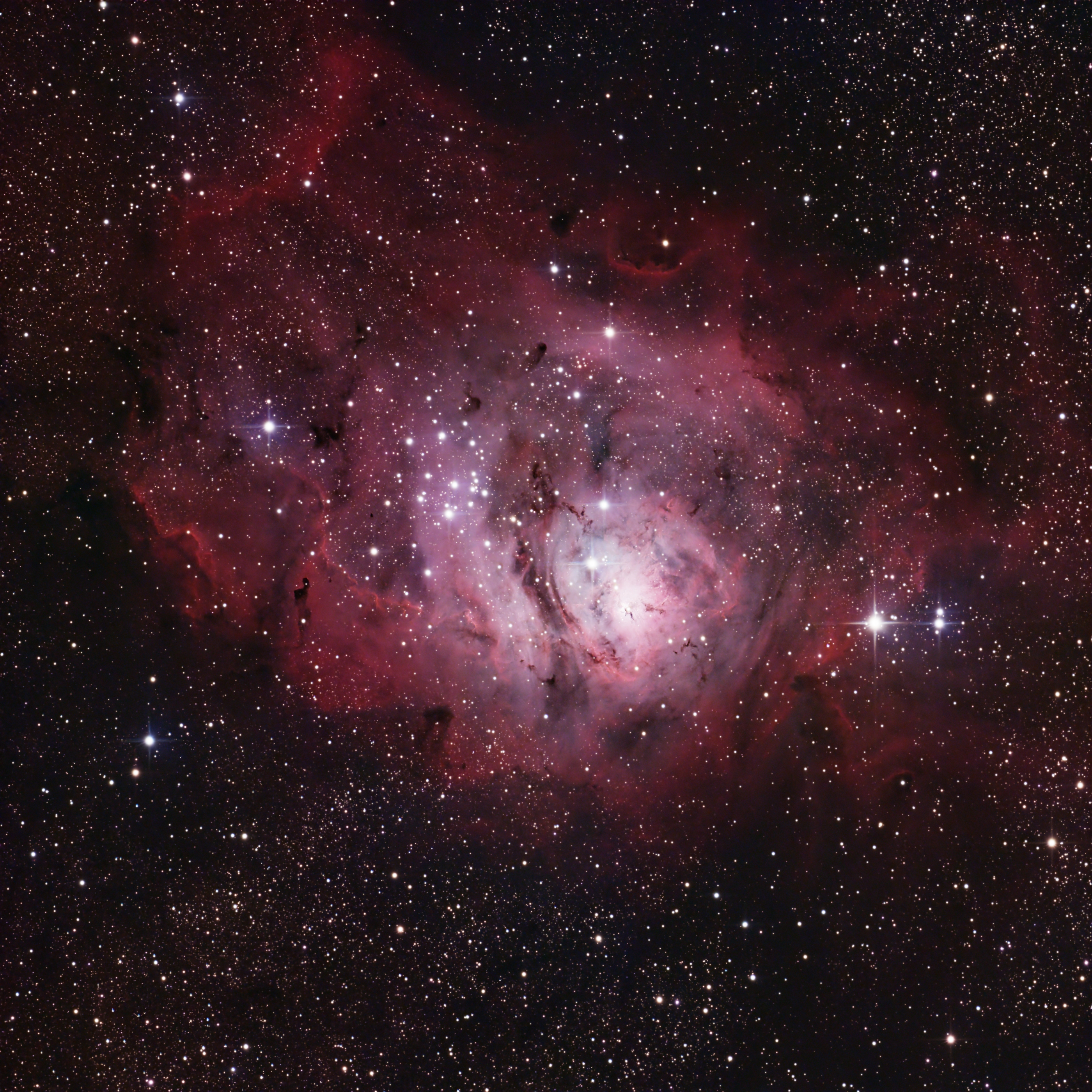
To zoom in or out on a computer, hold down the Ctrl key and scroll with the mouse, or you can press the + or - key. On a smart phone use 2 fingers.

M8, THE LAGOON NEBULA on 2023-06-27
M8, The Lagoon Nebula also know as NGC6523 and Sharpless 25, is a giant interstellar cloud in the constellation Sagittarius. It is classified as an emission nebula and as an H II region. The Lagoon Nebula is estimated to be between 4,000 and 6,000 light-years away from our solar system. In our sky, it spans an area 90' by 40' of arc, which translates into an actual dimension of 110 by 50 light years. The nebula contains a number of Bok globules (dark, collapsing clouds of protostellar material), the most prominent of which have been catalogued by E. E. Barnard as B88, B89 and B296. It also includes a funnel-like or tornado-like structure caused by a hot O-type star that emanates ultraviolet light, heating and ionizing gases on the surface of the nebula. M8 contains, at its centre, a structure known as the Hourglass Nebula. In 2006, four Herbig–Haro objects were detected within the Hourglass, providing direct evidence of active star formation by accretion within it.
This photo was taken in Kyle, Texas through a 6-inch f/4 Telescope, on a Sky-Watcher EQ6-R mount, with a ZWO ASI533MC PRO color camera. The processing was done in PixInsight. The total image acquisition time is: 01 hrs 39 min 30 sec.